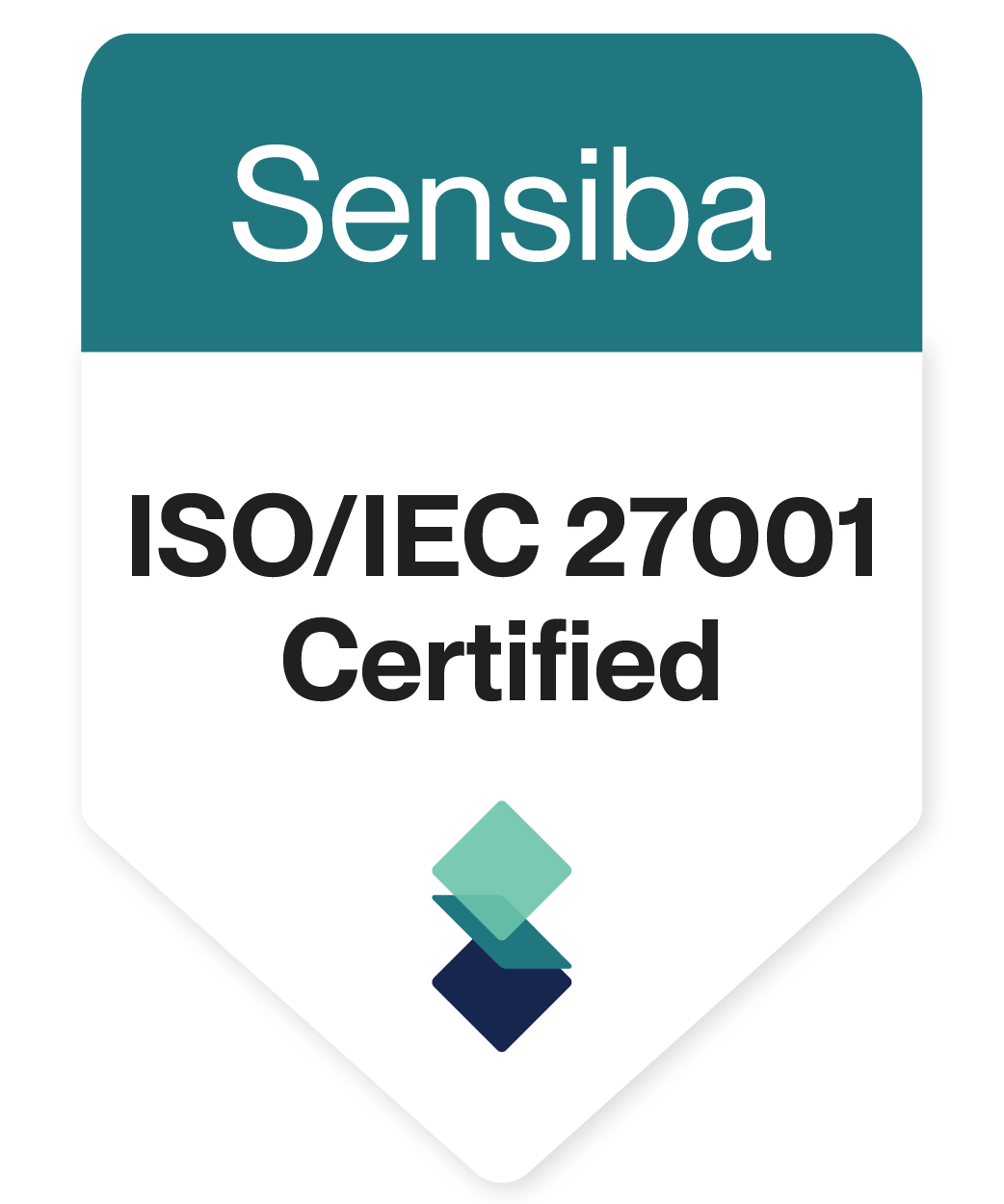Why do we care about trust in the workplace? Trust is a key currency of collaboration and employee engagement. It is the grease that makes the gears turn. When operating in a trusting environment, we feel comfortable sharing and being vulnerable with others and empowered to do our best work. We speak up, take chances, ask questions, and admit mistakes.
Trust serves as the lifeblood of collaboration and teamwork. When fostered appropriately, it paves the way for open dialogue, uninhibited innovation, and a company culture of high team performance and retention.
A team is not a group of people who work together. A team is a group of people who trust each other. – Simon Sinek
I spend most of my days as a founder and CEO working to build trust. Every conversation with employees, customers, investors, and partners is about building trust. In all those conversations, people are asking themselves, “Will this guy deliver on what he says, or is he full of crap?”
From my personal experience, I’ve come to understand that trust is not merely an aspirational goal but the very foundation on which prosperous organizations are built. Every conversation, whether it’s with employees, partners, or investors, becomes a testament to building and sustaining this trust.
KEY TAKEAWAYS
- Trust as Organizational Currency: Trust fuels collaboration and innovation, determining an organization’s momentum.
- Unveiling Transparency’s Depth: Beyond openness, transparency is about vulnerability, authenticity, and facing hard truths.
- Historical Lens on Trust: The emphasis on trust is an evolution shaped by centuries of business dynamics, not just a current trend.
- Emotional Intelligence and Communication: Two cornerstones that, when nurtured, lead to an environment of trust, understanding, and cohesive collaboration.
- Redefining Communication in the Trust Era: It’s about sharing information and ensuring alignment, understanding, and empowerment.

Building Trust In The Workplace: Unpacking Surface vs. Deep-rooted Trust
Of all the ways that I work to build trust during a normal workday, nowhere is the importance of trust more acute than in my experience in business partnerships. Cloverleaf has built a ton of partnerships. We have partnerships with assessment providers (see our full list of behavioral assessments), technology platforms, and coaching and consulting organizations. That is dozens of partnerships with some of the largest companies in the learning and development, coaching, and technology markets.
What is universal about starting and building those partnerships is that it takes a long time to find mutual alignment and earn trust. Often, these partners want to know that we are worth investing their personal time and the time of the people in their organization. Trust is the underlying metric that determines how much of that investment they make, and this only occurs over time.
Initial Impressions and Surface Trust:
At the onset of any professional relationship, we often rely on surface trust. Questions arise like, “Do I believe I know this individual?”, “Do we share common experiences or challenges?” or “Do their objectives align with mine?”. This preliminary layer of trust sets the stage for deeper connections.
Establishing genuine workplace trust demands more than just initial impressions. Collectively, it’s about consistently proving oneself over time, validating the trust others place in us. Trusting work relationships requires making larger trust deposits by consistently delivering on promises and upholding integrity. As the adage goes, “Trust takes years to build and seconds to break.” It’s a precious asset, demanding regular nurturing and commitment.

HUMAN SKILL PROGRAMS ARE HITTING LIMITATIONS...
- Close the widening gap between learning and on-the-job application
- Overcome the tension of pausing productivity for development opportunities
- Integrate learning so it is actually in the flow of work
- The evolution of human skill development
- What Automated Coaching™ is and how it works.
How To Build Trust In The Workplace
Trust is the backbone of a thriving workplace culture, laying the foundation for collaboration, mutual respect, and employee well-being. Building trusting work relationships often boils down to two key pillars: transparency and effective communication.
The Simple Equation For Building Trust In Your Organization:
Transparency + Effective Communication = Trustworthiness
Transparency: The First Component Of Cultivating Trust
Trust is precious, and regular investments in nurturing it are essential. The cornerstone of such investments is transparency. It serves as the bedrock upon which trust is built, fostering an environment of trust that encourages team members to collaborate without reservations.
The Diverse Forms Of Transparency:
Transparency manifests in various forms. Whether it’s detailing the reasoning behind specific decisions or being candid about one’s aspirations and concerns, transparency ensures mutual understanding.
People are keen, and it’s often obvious when decision-makers attempt to craft messages to present themselves in a certain light or obscure certain details. Team members can read right through this, and nothing will erode employee trust faster.
Without trust, conflict becomes politics, commitment becomes compliance, accountability becomes blame, and results just don’t matter. – Patrick Lencioni
True transparency entails an open, honest reflection on one’s decisions, ensuring collaborators know they’re not just part of a business transaction but a partnership built on trust.
The Rise of Organizational Transparency:
In recent years, transparency has shifted from being a recommended practice to an organizational imperative. The push for pay transparency, driven by glaring discrepancies in remuneration among genders and other underrepresented groups, serves as a prime example.
Lack of workplace transparency can have a negative impact on employee morale, experience, and engagement at work. Moreover, 50% of employees say that a lack of transparency holds their company back. This is why corporate communication functions should strive toward embedding workplace transparency into the corporate culture. – haiilo.com
This drive for transparency has cascaded into other domains, too, including board-level decisions, environmental practices, and supply chain operations. Such transparency trends, driven by legislation and market demands, signal a collective move towards a more transparent work environment.
Leaders across various industries can’t afford to ignore this growing emphasis on transparency. This momentum isn’t just about compliance with laws and professional practices; it reflects a broader societal shift valuing transparency. Leaders need to harness this drive, ensuring transparency becomes an integral part of their team and organizational engagement strategies.
Effective Communication: The Second Component Of Trusting Relationships
Building trust doesn’t stop at transparency. Effective communication is equally crucial, ensuring that transparency is practiced. It can be easy to overlook, but when organizations share information quickly lends to less stress and deeper levels of emotional trust felt among employees.
Bridging the Information Gap: The dangers of keeping teams in the dark:
Silence can sometimes be deafening, especially when critical decisions are at play. Leaders must avoid leaving an information vacuum, as it breeds assumptions and potential mistrust. Regular communication, tailored to your team’s context, can prevent such pitfalls.
Tailored Communication: Delivering the right message to the right audience:
Effective communication isn’t just about frequency but relevance. When significant changes arise, such as personnel adjustments, they must be communicated aptly. Direct, personalized messages for those most affected lay the foundation for trust. As you branch out to a broader audience, refining the message to suit their context is crucial.
Holistic Communication: Presenting complete information and addressing potential questions:
Trust isn’t built on half-truths. Leaders must ensure their communication provides a complete picture, addressing potential questions and concerns. Crafting FAQs, providing context, and explaining the ‘why’ behind decisions can fill any informational gaps, ensuring the team feels valued and informed.
Over-communicating strategy, especially the rationale behind key decisions, builds trust and fosters organizational buy-in, strengthening the bonds of mutual trust.

The Need For Creating A Culture Of Trust Is Nothing New
It’s essential to recognize that trust isn’t a modern-day phenomenon. Its importance in the workplace has roots stretching back over centuries. Understanding how trust has evolved historically, especially concerning transparency and communication, can provide invaluable insights into its ever-growing significance today. Consider how trust in the workplace has transformed and adapted to the changing landscape of business and society.
The Evolution of Transparency and Communication in the Workplace
The Industrial Era (Late 1800s – Early 1900s):
During this period, trust was hierarchical. Managers were expected to lead, and workers were expected to follow. There was little emphasis on transparency, as information was centralized. Communication was top-down, and workers rarely had a say in organizational decisions.
The Post-War Era (1950s – 1960s):
Post World War II, companies started to value teamwork as they grew in size. The hierarchical structure persisted, but there was an increased emphasis on collaboration. However, transparency was still limited to higher echelons of management.
The Technological Revolution (1980s – 1990s):
With the advent of computers and the internet, information became more accessible. This era marked the beginning of a shift towards a more open work environment. Communication tools started to evolve, and employees began to expect more transparency in organizational decision-making.
The Information Age (2000s – 2010s):
The rise of the internet, particularly social media, fundamentally altered the landscape of workplace communication. Employees could now communicate in real time, irrespective of geographical boundaries. The need for transparency grew as information could no longer be contained. Organizations faced scrutiny from both internal and external stakeholders.
The Modern Era (2020s):
In today’s world, transparency and open communication are not just desired but expected. With tools that facilitate instant communication and the rise of remote collaboration, organizations are prioritizing building trust with their employees. They recognize trust as the bedrock of collaboration, innovation, and organizational effectiveness.
The emphasis on psychological safety, a term popularized by teams at Google after their research during Project Aristotle, further emphasizes the need for trust. Employees today not only want to know organizational decisions but also want to have a voice in them. They seek authentic leaders who communicate transparently and foster an environment of mutual trust.
7 Ways To Practice Transparency & Communication To Create High Levels Of Trust
As organizations grow, the challenges of maintaining trust and cohesion across diverse teams intensify. Below are seven actionable strategies for supporting transparency and communication that leaders can use to ensure high levels of trust regardless of the organization’s size.

1. Regular Updates and Check-Ins:
In sprawling organizations, information can easily get siloed. By instituting regular communication channels, leaders ensure that every corner of the organization receives consistent and clear updates. This aligns teams and fosters a sense of unity and purpose.
2. Explain Decision-Making Processes:
Sharing the rationale behind significant decisions demystifies leadership actions, fosters understanding, and reduces the scope for rumors or misinformation.
3. Authentic Goal Sharing:
Clear communication about the organization’s direction ensures that all units, departments, or teams align their objectives harmoniously. It’s about sharing the goals, vision, and mission, creating a cohesive organization with clear expectations.
4. Address Discrepancies:
Discrepancies in large organizations can become systemic if not addressed. By regularly auditing and transparently addressing discrepancies, leaders ensure fairness and cultivate a culture of accountability and integrity.
5. Utilize Technology:
Leveraging platforms can streamline communication and project tracking across vast, dispersed teams. It ensures everyone, regardless of their position, has access to real-time, consistent information, enhancing transparency and efficiency.
6. Value Feedback:
Despite size and complexity, it is imperative to foster an environment where employees at all levels feel their voices can be heard by leadership. Feedback can bridge the gap between the C-suite leaders and team members.
7. Learning and Development:
Investing in training and development emphasizes a commitment to growth and transparency. In large entities, where the ripple effect of a lack of trust is significant. Organizations that proactively support improving employee experience by implementing trust-building tools can positively influence the entire organizational culture.
Cloverleaf’s Role in Fostering Trusting Workplace Relationships
At its core, Cloverleaf is designed to help teams quickly build trust. When team members understand each other and recognize their strengths, they can more easily work together.
By supporting self-awareness, you can reduce people-related issues. Trust is not abstract; it is a tangible feeling that teams can strengthen every day. When individuals can clearly see and know one another’s behaviors, communication styles, and strengths, it decreases the pull toward micromanaging and frustration among teammates.









